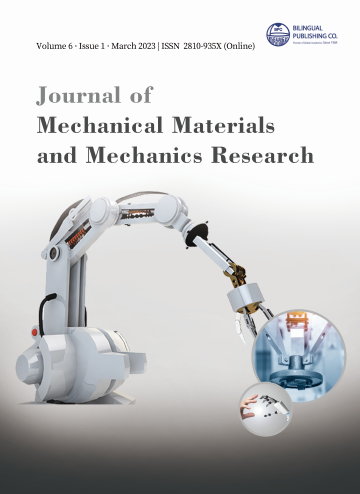-
201
-
128
-
82
-
80
-
72
Design and Implementation of a Control System to Mitigate Osteonecrosis in Orthopedic Bone Drilling Procedures
DOI:
https://doi.org/10.30564/jmmmr.v6i1.5435Abstract
The drilling process in orthopedic surgery can sometimes lead to an undesired increase in temperature, which can cause serious damage to bones and soft tissues. This overheating is typically identified as a temperature above 47 °C, known as the critical limit, and can result in the condition known as osteonecrosis. This study aims to develop a new control system, using a proportional-integral-derivative (PID) controller, to prevent overheating and the resulting osteonecrosis. The bone temperature is constantly measured using a thermocouple and, when it reaches the critical temperature of 47 °C, the cooling device is activated by the PID-controlled system. This new control system makes the drill machine with cooling device more user-friendly and allows surgeons to set a desired temperature level manually.
Keywords:
Bone drilling; orthopedic surgery; osteonecrosis; PID controller; driller mechanismReferences
[1] Gök, K., 2014. Drill design and prototype manufacturing to prevent of thermal damage in bone drilling process. PhD Thesis, Kocaeli Üniversity, Kocaeli, Turkey
[2] Hillery, M.T., Shuaib, I., 1999. Temperature effects in the drilling of human and bovine bone. Journal of Materials Processing Technology. 92–93, 302-308.
[3] Eriksson, A.R, Albrektsson, T., 1984. Heat caused by drilling cortical bone. Temperature measured in vivo in patients and animals. Acta Orthopaedica Scandinavica. 55, 629-631.
[4] Augustin, G., Davila, S., Mihoci, K., Udiljak, T., Vedrina, D., Antabak, A., 2008. Thermal osteonecrosis and bone drilling parameters revisited. Arch Orthop Trauma Surg. 128 (1), 71-77.
[5] Gok, K., Buluc, L., Muezzinoglu, U.S., Kisioglu, Y., 2014. Development of a new driller system to prevent the osteonecrosis in orthopedic surgery applications. Journal of the Brazilian Society of Mechanical Sciences and Engineering. 37(2), 549-558.
[6] Toews, A.R., Bailey, J.V., Townsend, H.G.G., Barber, S.M., 1999. Effect of feed rate and drill speed on temperatures in equine cortical bone. Am J Vet Res. 60, 942-944.
[7] Martinez, H., Davarpanah, M., Missika, P., Celletti, R., Lazzara, R., 2001. Optimal implant stabilization in low density bone. Clinical Oral Implants Research. 12(5), 423-432.
[8] Chen, H., Sun, J., Hoemann, C.D., Lascau-Coman, V., Ouyang, W., McKee, M.D., Shive, M.S., Buschmann. M.D., 2009. Drilling and microfracture lead to different bone structure and necrosis during bone-marrow stimulation for cartilage repair. Journal of Orthopaedic Research. 27(11), 1432-1438.
[9] Matthews, L.S., Green, C.A., Goldstein, S.A., 1984. The thermal effects of skeletal fixation-pin insertion in bone. The Journal of Bone & Joint Surgery. 66(7), 1077-1083.
[10] Abouzgia, M.B., James, D.F., 1995. Measurements of shaft speed while drilling through bone. Journal of Oral and Maxillofacial Surgery. 53(11), 1308-1315.
[11] Anitua, E., Carda, C., Andia, I., 2007. A novel drilling procedure and subsequent bone autograft preparation: a technical note. Int J Oral Maxillofac Implants. 22(1), 138-145.
[12] Abukhshim, N.A., Mativenga, P.T., Sheikh, M.A., 2006. Heat generation and temperature prediction in metal cutting: A review and implications for high speed machining. International Journal of Machine Tools and Manufacture. 46(7–8), 782-800.
[13] Mukherjee, I., Ray, P.K., 2006. A review of optimization techniques in metal cutting processes. Computers & Industrial Engineering. 50(1–2), 15-34.
[14] Ueda, T., Nozaki, R., Hosokawa, A., 2007. Temperature measurement of cutting edge in drilling -effect of oil mist. CIRP Annals - Manufacturing Technology. 56(1), 93-96.
[15] Hamade, R.F., Seif, C.Y., Ismail, F., 2006. Extracting cutting force coefficients from drilling experiments. International Journal of Machine Tools and Manufacture. 46(3–4), 387-396.
[16] Augustin, G., Davila, S., Udilljak, T., Staroveski, T., Brezak, D., Babic, S., 2012. Temperature changes during cortical bone drilling with a newly designed step drill and an internally cooled drill. International Orthopaedics (SICOT). 36(7), 1449-1456.
[17] Lee, J., Ozdoganlar, O.B., Rabin, Y., 2012. An experimental investigation on thermal exposure during bone drilling. Medical Engineering & Physics. 34(10), 1510-1520.
[18] Sezek, S., Aksakal, B., Karaca, F., 2012. Influence of drill parameters on bone temperature and necrosis: A FEM modelling and in vitro experiments. Computational Materials Science, 60(0), 13-18.
[19] Basiaga, M., Paszenda, Z., Szewczenko, J., Kaczmarek, M., 2011. Numerical and experimental analyses of drills used in osteosynthesis. Acta of bioengineering and biomechanics / Wroclaw University of Technology. 13(4), 29-36.
[20] Natali, C., Ingle, P., Dowell, J., 1996. Orthopaedic bone drills - can they be improved? Temperature changes near the drilling face. Journal of Bone & Joint Surgery. 78-B (3), 357-362.
[21] Ohashi, H., Therin, M., Meunier, A., Christel, P., 1994. The effect of drilling parameters on bone. J Mater Sci: Mater Med. 5(4), 237-241.
[22] Nam, O., Yu, W., Choi, M.Y., 2006. Monitoring of bone temperature during osseous preparation for orthodontic micro-screw implants: effect of motor speed and pressure. Key Engineering Materials. 321-323, 1044-1047.
[23] Sharawy, M., Misch, C.E., Weller, N., Tehemar, S., 2002, Heat generation during implant drilling: The significance of motor speed. Journal of oral and maxillofacial surgery : official journal of the American Association of Oral and Maxillofacial Surgeons. 60(10), 1160-1169.
[24] Stabler, G.V., 1951. The fundamental geometry of cutting tools. Proceedings of the Institution of Mechanical Engineers. 165, 14–26.
[25] Shamoto, E., Altintas, Y., 1999. Prediction of shear angle in oblique cutting with maximum shear stress and minimum energy principles. J Manuf Sci Eng. 121(3), 399-407.
Downloads
How to Cite
Issue
Article Type
License
Copyright © 2023 Kadir Gok,Yasin Kisioglu,Arif Gök

This is an open access article under the Creative Commons Attribution-NonCommercial 4.0 International (CC BY-NC 4.0) License.




 Kadir Gok
Kadir Gok





